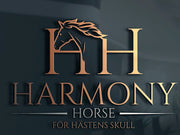The following are the best things I learned about characterizing horses. You will benefit greatly from knowing which type/element your horse belongs to and how to keep your horse in balance mentally, emotionally and physically.
When you let your horse out in the paddock in the early hours of the morning, what kind of character do you see?
Is it the horse eagerly rushing to the gate, impatient to stretch its legs and perform its morning dance after a night in the stable?
Or perhaps the one who resolutely pushes through the gate and immediately begins to graze, unconcerned about his companions?
Is it the horse that playfully gives a friend a little pinch, always ready for the next adventure?
Or the one who calmly waits his turn, lost in his own thoughts?
Or perhaps the last horse, moving slowly but vigilantly, ever aware of the dynamics of the herd and commanding it with a natural, quiet authority?
I am very interested in natural and holistic medicine such as homeopathy and Chinese medicine and treatment methods such as acupuncture, IR therapy, herbs etc. which I have had incredibly good experience with. It is so important for both us and the animals to be in balance both mentally, emotionally and physically in order for us to feel good and stay healthy. I found a very interesting article by Susan Tenney, an international teacher, author and practitioner of Shiatsu and Five Element Acupressure for animals.
She describes the Five Elements in Classical Chinese Medicine and how to find out which element one's horse (or dog) belongs to. The elements are FIRE, EARTH, WATER, WOOD and METAL . This is important knowledge as we find out what that particular horse's strengths and weaknesses are, both in terms of training and physically.
What should be given extra attention to keep the horse healthy and what it is best suited for. I already knew from herbalists that my horse Mifune belongs to the Wood element when I described his problems with diarrhea as he could not tolerate the hay, and his sensitive hooves. When I read Susan's description of this element, I was amazed at how well it fit.
Thousands of years ago, CCM practitioners found that the body's energy regularly goes through five different natural phases, often called the five elements. They saw how each element affected the body's organ functions, emotional stability, and body health.
When a patient's Five Elements were healthy and balanced, he glowed with vitality; when they were weak or unbalanced, he developed behavioral problems and physical ailments. These early practitioners developed an entire system of assessment and treatment based on the five elements.
This model has been practiced and refined over centuries and is very effective for today's animals, including horses. By applying the basics of the Five Element theory , you can relieve common acute health conditions such as lameness or colic. You can also improve long-standing problems, from chronic coughs and skin problems to dangerous aggression and debilitating fear.
Several horse people/trainers characterize horses in different ways but can be difficult to use and may not be as effective. With these FIVE ELEMENTS, we can more easily understand the individual horse and help it feel good and stay healthy. Each horse embodies common physical and behavioral characteristics of the Five Elements of Classical Chinese Medicine (CCM).
By understanding how the Five Element patterns relate to your horse, you can learn how to keep your horse healthy and happy on a deep, lasting level. We can also complement it by learning acupressure through simple touch to bring health and happiness to our horses.
First published 18/9-2016 RelationshipbasedArtofRiding,com founded by Anneli Westlund



